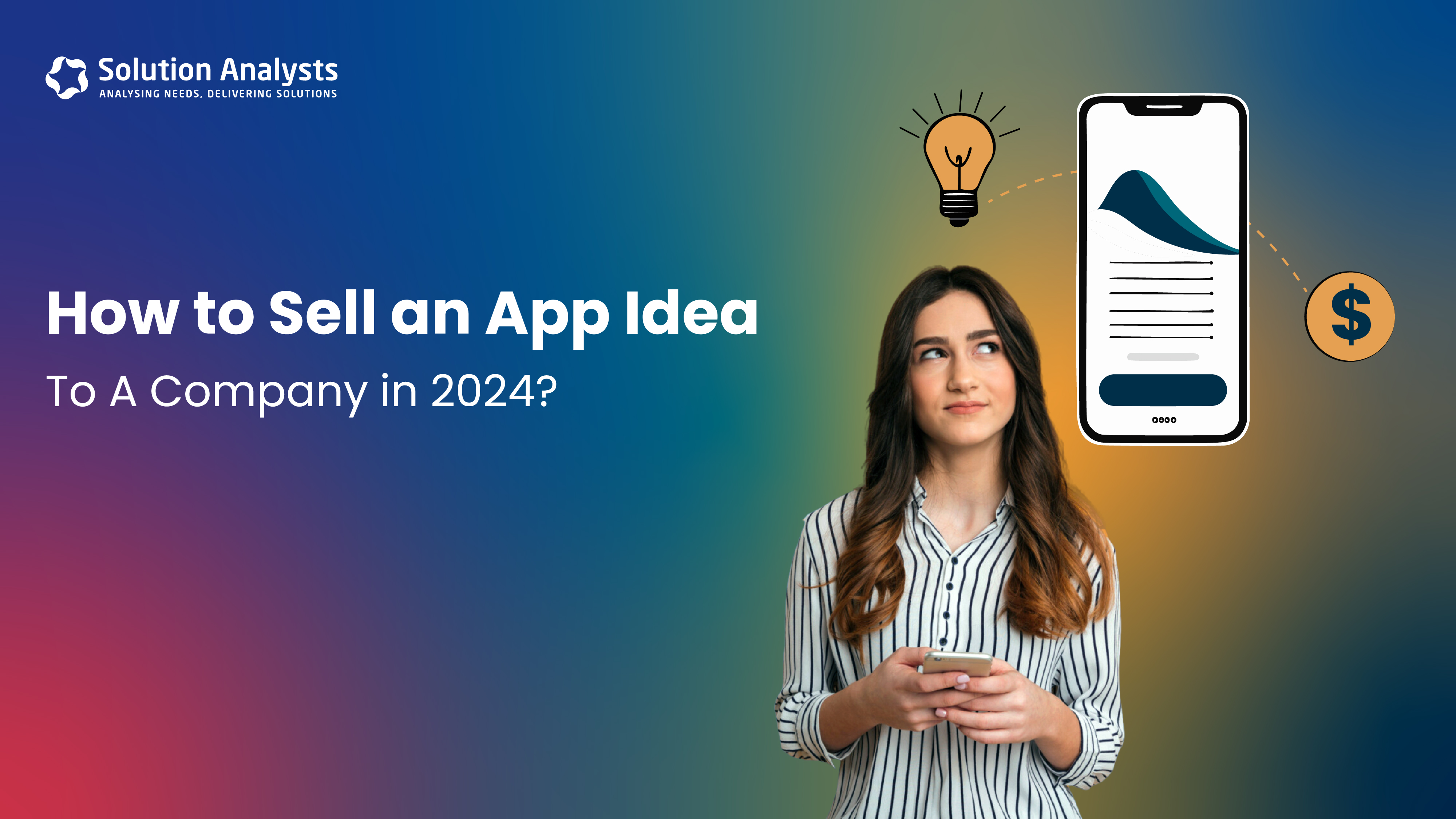
Table of Contents
Smartphones have revolutionized the way we communicate and interact with each other. The Global smartphone market is valued at $500 billion. It is on the path to becoming a $900 billion industry by 2030. The growing demand for services such as e-commerce, mobile banking, social media, and streaming platforms is a massive boost to the popularity of smartphones. Apple is now the world’s largest cellphone manufacturer, surpassing Samsung after 12 years as the top manufacturer. The development in the technology always gives boost to a new enterprenriul shift into youth that wonders how to sell an app idea?
So far, the share of smartphones has been more substantial in developed nations, while the demand for lower-cost cellular devices has been increasing in developing countries. The increase in purchasing power parity has led to higher spending on entertainment, media, and gaming, once spent only on communication.
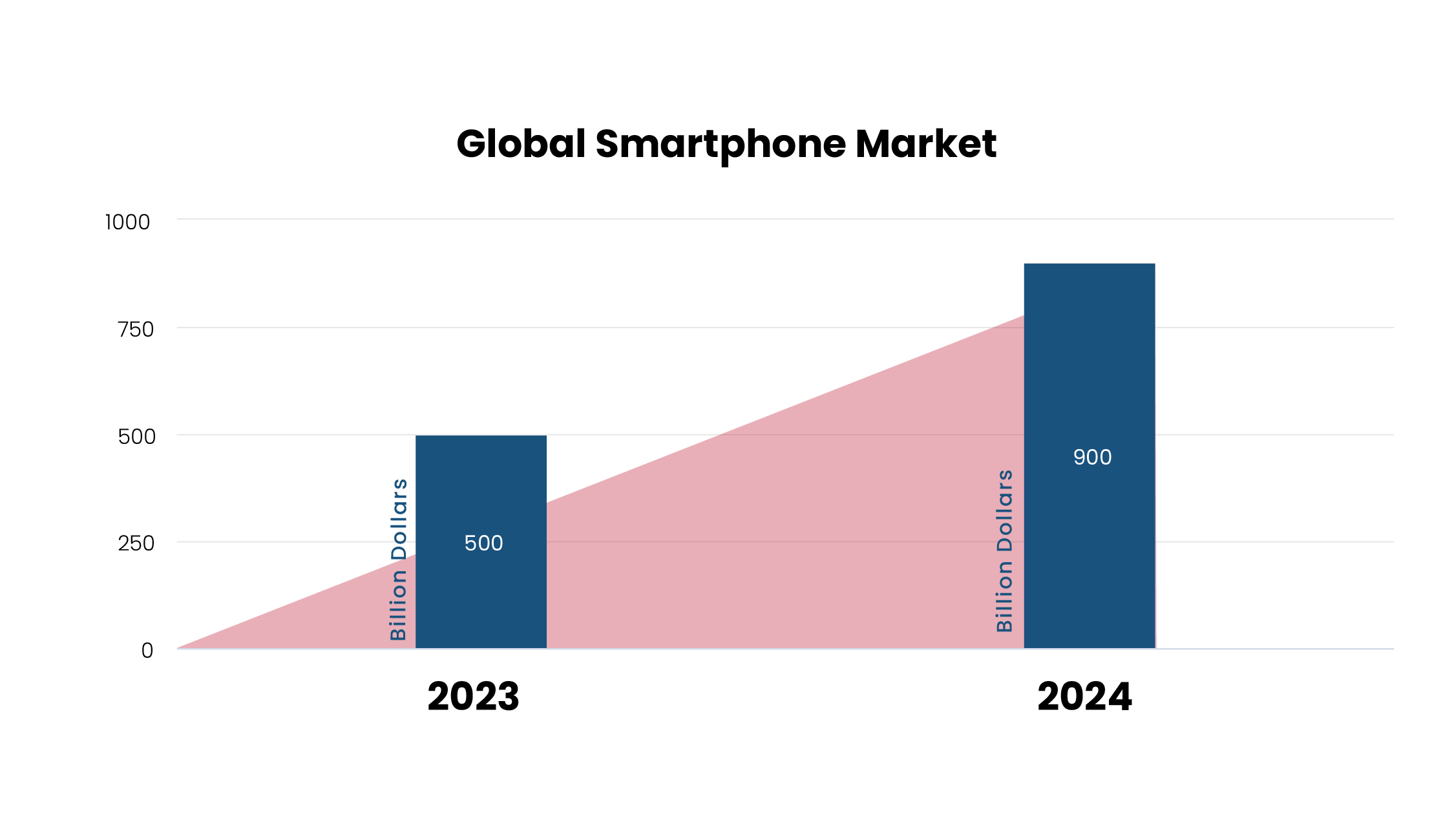
Mobile applications have made a significant contribution to the economy.
Since so many sectors can be disrupted, an individual may often struggle between multiple ideas such as logistics app development, elearning app developers, healthcare mobile app development, and more. While also trifling with, how can I find app developers near me?
How to sell an app idea
The basic idea behind creating a new application is to solve a problem existing in the market. Solving this quest increases the chances when it comes to facing a question of how to sell an app idea. John Collison and Patrick Collison founded Stripe when Patrick had difficulty accepting payments online. Pavel Durov founded Telegram – an encrypted messaging platform so he could pass information to his brother securely. Melanie Perkins created Canva because she realized teaching people Photoshop and similar software was tricky.
The thought process behind every idea is linked to solving a simple problem. Sometimes, this can be adding new features, creating a new category, or making the existing options convenient. We as a species have come a long way with the dawn of industrialization and modernization. The basic needs of survival have been taken care of, and humans are finding more and more ways to increase comfort and ease in their day-to-day activities.
Some of the most famous online startups thriving in the present era are providing convenience to consumers and freeing them from visiting physical stores. Amazon, DoorDash, Uber, etc, are shining examples of it.
Talking to your customer is the right approach from where one can start. However, just listening isn’t going to solve the problem. The real victory lies in distinguishing between an emergency and a mild inconvenience.
Refining App Idea
Once the initial idea is finalized, it is time to polish it. The simple concepts often require sculpting and molding into the proper structure. Refining helps to find the right marketplace and audience. Businesses spot an opportunity and rush towards encashing it. Acknowledging that there is room for change in the application is essential. A constant refinement is vital to keep the application relevant in the market.
-
Defining USP
USP (Unique Sales Proposition) helps to provide an additional feature or service that sets the application apart. This service is crucial to make an impact on a large scale. This USP can benefit a large user community, making it the priority. For example, an online eyewear chain can provide free trials of multiple eye frames at home so the consumer can have different options to choose from. An online insurance provider can give an insurance coverage policy within less than a minute.
-
Comprehensive Market Research
In-depth market research can help understand the competitors’ take and analyze the trends in the market. This step helps identify the market demand for the application and increases the probability on how to sell an app idea. The study should be focused on every aspect related to the market. The number of competitors, similar service providers, total number of users, average ticket size, etc, should be part of the research.
-
Identify Target Audience
Identifying the target audience is essential to create and provide service in a tailored manner. This helps meet specific needs and preferences set by users. Knowing the audience’s demands helps create marketing strategies and reach the right people. This helps minimize or, in some cases, eliminate the user acquisition cost. Applications with niche audiences find it easy to target the audience that will find it more useful.
-
Validatation on how to sell an app idea
Validating the idea signifies the relevance of the application in the market. It involves the demand for the service in the market, the scope of the service, the potential of the service, and methods that can be used to achieve the target. The primary validation helps to identify common and potential challenges before they become big. It also helps to test the market niche.
-
Collect Feedback that helps sell an app idea
Collecting feedback helps in the development of the product. Implementing the features required and requested by users increases their ease and comfort. This helps develop the application with a user-centric approach. This increases user engagement and prioritizes the features. Multiple methods can be used to collect user feedback, such as App Reviews, Beta testing, User Analytics Observation, Social Media Handles, Focus groups, etc.
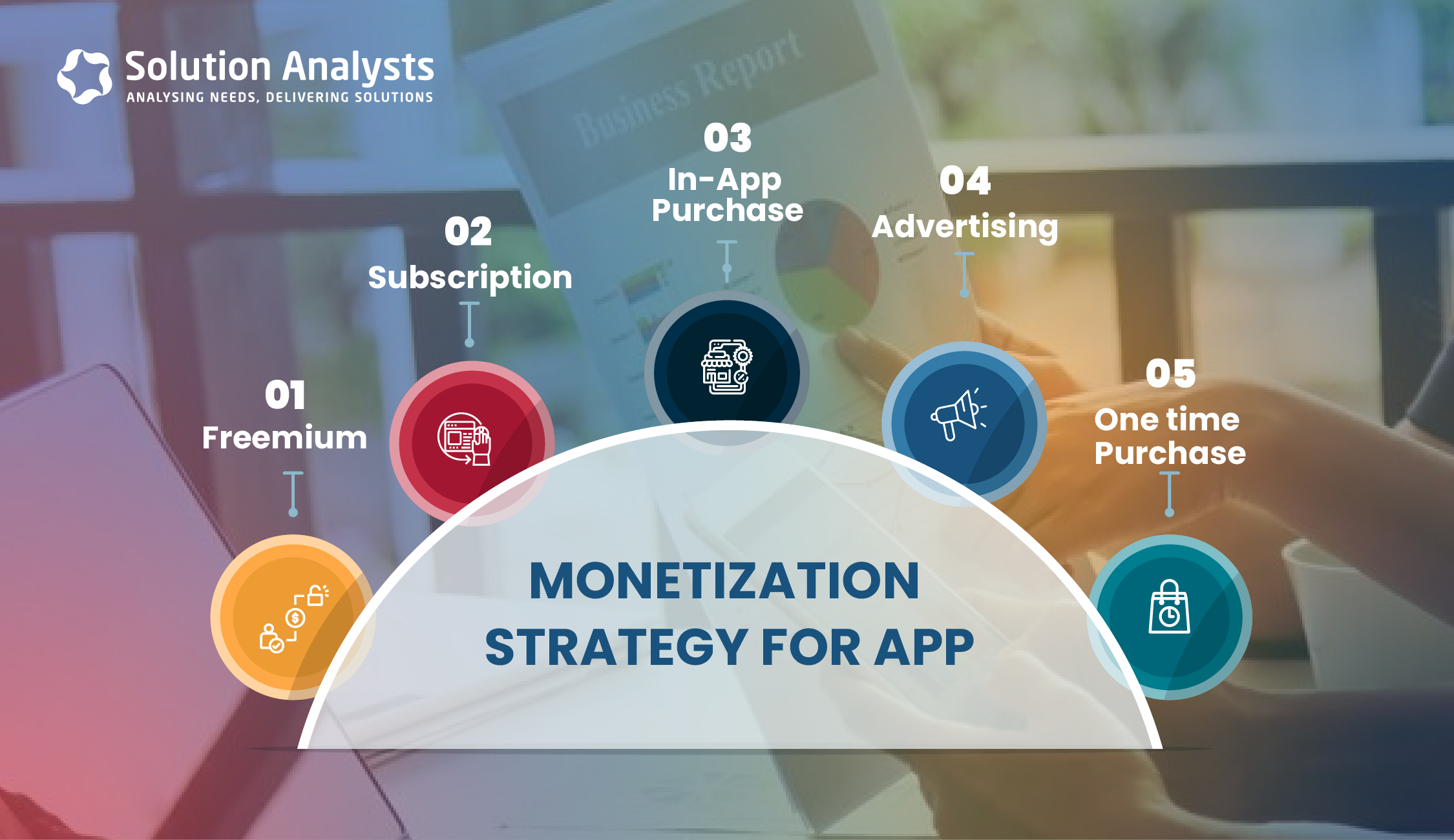
Monetization Strategy for how to sell an app idea
Developing an application is not essential, but sustaining and growing it is. A clear idea for monetizing the application can help you learn about the future trajectory and growth of the app. This helps to get the idea picked when in the market struggling with the question of how to sell an app idea? It is essential to ensure the application has a sustainable revenue generation strategy.
-
Freemium Model
As the name suggests, this model allows the application to run for free with certain limitations. Many companies follow this model. e.g., Spotify will enable users to access the content for free. However, After a certain number of songs are played, the user has to bear the advertisement/s. If the users want to listen to the songs continuously without interruption, they must pay and buy a premium subscription. The market is flooded with such cases where founders have used freemium model while betting on how sell an app idea?
-
Subscription Based
The subscription-based model runs entirely on the user’s agreement to pay renewable charges. Users pay a recurring monthly or yearly fee to continue using the service. This model is popular among fitness applications, productivity applications, streaming applications, and many more…
-
In-App Purchases
The in-app purchases model works very well for games. It integrates virtual goods that users can purchase and utilize online in the same application. For example, popular games have gold coins that can be bought using real money, and later on, those coins can be utilized for power boost-ups and upgraded gaming customizations.
-
Advertising Model
Advertising is one of the most popular revenue-generating methods for applications. Most of the popular applications run on this model. Popup display ads, video ads, sponsored ads, or targeted ads by selling data are famous examples. Compared to the pure display ad run model, targeted ad applications have a higher chance of showcasing the ad to the right audience, which can later turn into a transaction.
-
One time purchase
Purchase once, use forever; this type of application charges users only during the initial period and, in exchange, provides lifetime service. The applications are also called paid apps. Paid applications are slightly better than other free competitors in the market and offer better functionality, so users pay for them.
Protecting Intellectual Property
Application idea is not just a paper concept but a market breakthrough with great potential. No investors is willing to invest in a project that does not hold any IP(Intellectual Property), hence a strong backing of holding an IP can help to take on how to sell an app idea? There has to be a substenital backing idea the project. The idea behind the application includes different models for different departments. Protecting this application idea is important to avoid future legal disputes that may be difficult for the organization.
-
Preserve Innovation
Intellectual Property preservation helps prevent the unauthorized use of the application idea and protects the efforts that have gone into the creation of the entire project. It preserves the uniqueness and innovation that has been connected with the idea.
-
Create Competitive Edge
Securing the right for the application helps to create a competitive edge in the market. Creating a distinct personality for the application helps when someone tries to replicate the features and design of the application.
-
Attracting Investors
When intellectual rights protect the application, investors are inclined to invest in it. It increases the confidence of stakeholders, ensuring their investment will stay safe and won’t be harmed.
-
Foster Innovation
Intellectual property fosters a conducive environment. When creators feel safe and secure, they tend to surpass creative boundaries. Securing rights gives a sense of safety, so the creators experiment with more services and features.

Methods for how to sell an app idea
Multiple methods are used to secure the rights of a digital product. This methods secure the rights that comes in handy when asked how to sell an app idea? Below are some of the techniques used widely in the industry to protect an application’s intellectual rights and property.
-
Patents
Inventions can be patented. Getting a patent for an application may be challenging, but unique features and algorithms can be secured with a patent. Consulting with a patent attorney can help to figure out which type of patent can protect the application idea.
-
Trademarks
Trademarks are used to protect signs, symbols, and logos that are associated with the application. Registering for a trademark helps to protect these symbols so that nobody else can use the same sign.
-
Copyright
Copyright helps to protect the conceptual idea of the application. Code, design, and creative elements used in the application can be copyrighted to protect the application from getting into any legal trouble.
-
Licensing
If the application uses any open-source components and materials, it is required to obtain the associated licenses. It refers to permitting a third-party platform to use specified structures created by other entities.
Creating MVP helping how to sell an app idea
The MVP (Minimal Viable Product) is the first step towards product development. MVP can be tested with minimal features and basic functionality. This MVP can be deployed to early adopters to get the primary response.
-
Proof of Concept
A Proof of Concept, also known as PoC, primarily showcases the idea’s technical feasibility. When it comes to creating an application, PoC works as the initial step to see if the envisioned application can be created or not. It demonstrates a functioning context of the concept.
-
User Feedback
Receiving user feedback on the MVP is important to iterate the application and make it more user-friendly. To understand and provide what users demand, listening to and implementing what users want is essential. There are multiple ways to collect user feedback, such as in-app surveys and learning from reviews.
-
No Code/Low Code Platforms
Leveraging No-code/low-code platforms for MVP development can be a game changer for the project’s development. Relying on no-code platforms can accelerate the pace of the project and provide a responsive prototype. They result in reduced time for actual development and help test new features. The developer can try with core features and iterate as per the requirement.
-
UI Prototyping
A well-designed User Interface (UI) can ensure MVP’s success and the application’s. Figma, Sketch, and AdobeXD are popularly used to create a comprehensive design and a dynamic user experience. UI prototyping lets the creators map out and visualize the project on the primary scale. The primary mock-ups serve as the guiding torch of the project.
Market Analysis
Market Analysis is an essential step in developing and selling an app idea. A thorough analysis of the market looks after the positioning of the application. It involves conveying the unique USPs to the users in a manner that makes the application more desirable. A good market analysis can help calculate the average revenue of the application in the short term and the long term.
-
Integration of Market Trends
Integration and adaptation of current market trends help market the application to a broader audience. Staying ahead of the market trends is instrumental to keeping the application idea relevant for the audience. The trends in the market keep on changing. Keeping the pace up and highlighting the latest features and functionalities is essential.
-
User Behaviour to understand how to sell an app idea
Any user undergoes constant evolution of changes and is always influenced by the different tools with which it is surrounded. Cracking the user’s behavior is essential to provide the best possible experience to them. The evolving patterns always keep the user occupied and provide newness to the system. For example, Uber has changed its logo multiple times throughout history. Similarly, Facebook changed users’ profiles from walls to timelines and, later, profiles.
-
Personalization
Every user craves a personalized experience. Mobile applications have the power to train algorithms in such a way that every time a user opens the application, they are served a view that is personalized solely for them. Many social media platforms and fintech applications have already made it possible. A personalized view always increases the chances of transactions and keeps the user engaged with the application longer.
Pitching the Idea
Startups have been raising millions and, in some cases, billions of dollars in different rounds. What makes investors pour such huge sums of money is not the balance sheet but the potential these ideas have. On average, 90% of launched startups fail in the first 5 years. Still, these statistics don’t fear VCs investing money in ideas that claim to be groundbreaking.
-
Elevator Pitch
Elevator pitch includes a concise idea and a summary of the application. It conveys the gist of the idea. The problem it’ll try to solve, how it’ll solve it, how it’ll be beneficial for the user, and what the target audience is. It also includes the USP of the product.
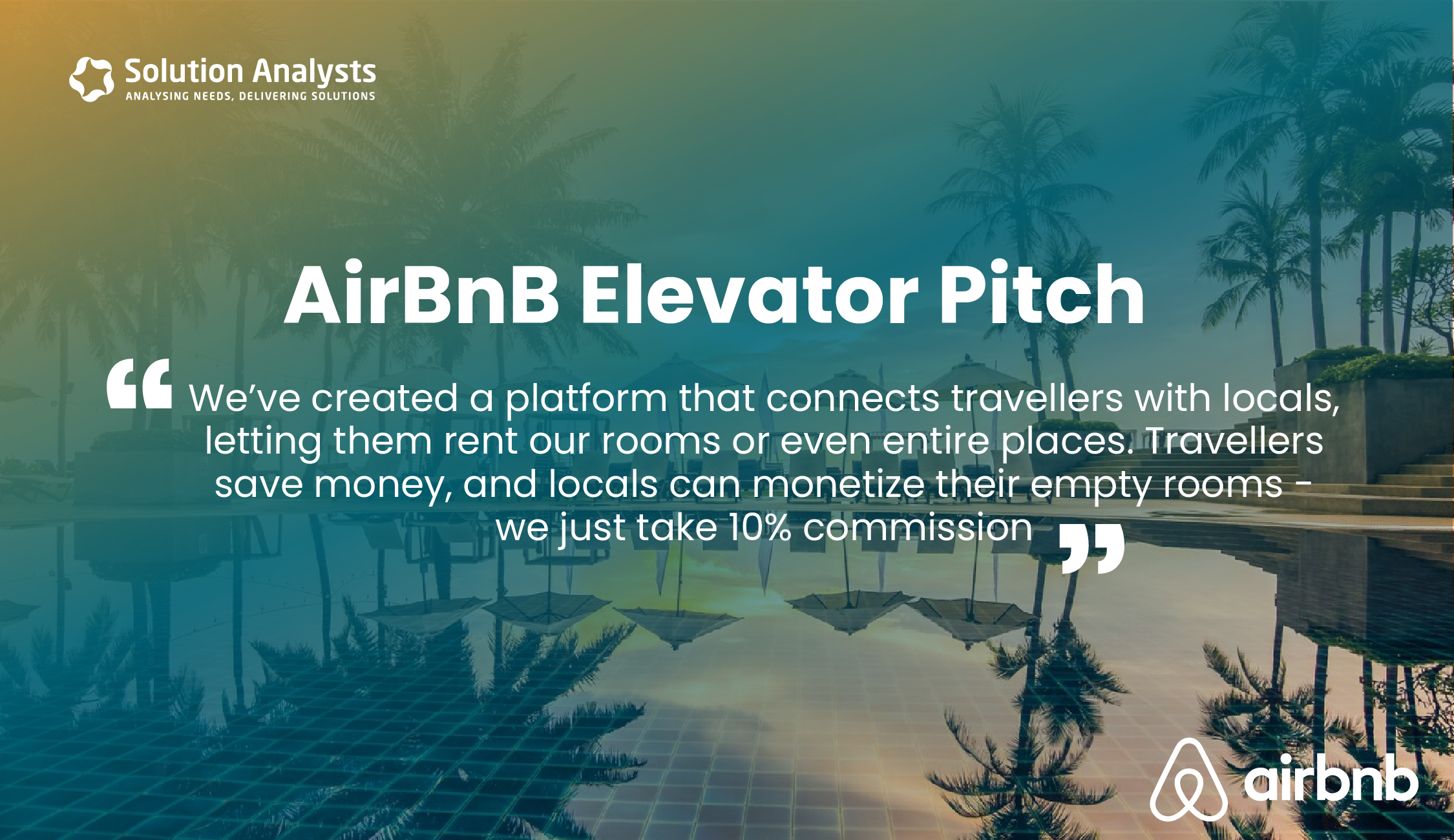
-
Airbnb Elevator Pitch:
“We’ve created a platform that connects travelers with locals, letting them rent our rooms or even entire places. Travelers save money, and locals can monetize their empty rooms – we just take 10% commission.”
-
Highlighting Key Benefits
Showcase what the users will gain by using the application and what the investors will gain by investing in it. The ease in the overall user experience, cost-effectiveness, and innovation should be part of the key benefits.
-
Data
The pitch with data will hold more legitimacy than just plain claims. Sharing TAM (Total Addressable Market), User Adoption Rates, and Industry trends helps provide a project baseline. Data adds a layer of trust and forecasting to the product pitch.
Closing the Deal
It is important to discuss potential collaboration models for a successful closure of the deal. Successfully negotiating terms and conditions helps to define clear objectives, goals, and expectations. There are multiple collaboration models in the market, and one suitable for both parties should be considered for betterment and growth.
-
Licensing Agreement
A licensing agreement may be suitable if the application has features that can be provided to another application or system. The use of Intellectual property should be well defined so another service provider can license and use it.
-
Partnership
The partnership model involves parties working jointly towards the same or different goals. The model looks after sharing resources and expertise so that both parties can look after their gain. A partnership clearly outlines responsibilities and benefits for each of the partners.
-
Acquisition
The acquisition makes the most sense if the final idea is to sell the application. More giant corporations may acquire small or budding applications in the initial days. More prominent organizations often tend to develop other big applications once they start as small-scale businesses.
Conclusion
The journey of an application from idea to execution is spreading into many different territories. A strategic idea for building an application that can scale and turn into something big is tempting, but the pathway to achieve it is more complex. Keep in mind that the learnings can help make this road smooth. Here is the guide that provides an outline of this journey.
-
Research the Market
Before jumping into any market, ensure all the competitive landscapes have been well understood.
-
USP
A Unique Selling Proposition (USP) has to be identified and articulated to increase the chances of success.
-
Monetization strategy for How to sell an app idea
Clear and effective monetization strategy with potential revenue streams.
Building and selling an application requires determination, adaptability, belief, and value in the long term. There will be many challenges along the way. Taking care of all the potholes coming on the way and stepping forward can transform the vision into a successful reality.
Case Studies focusing on how to sell an app idea
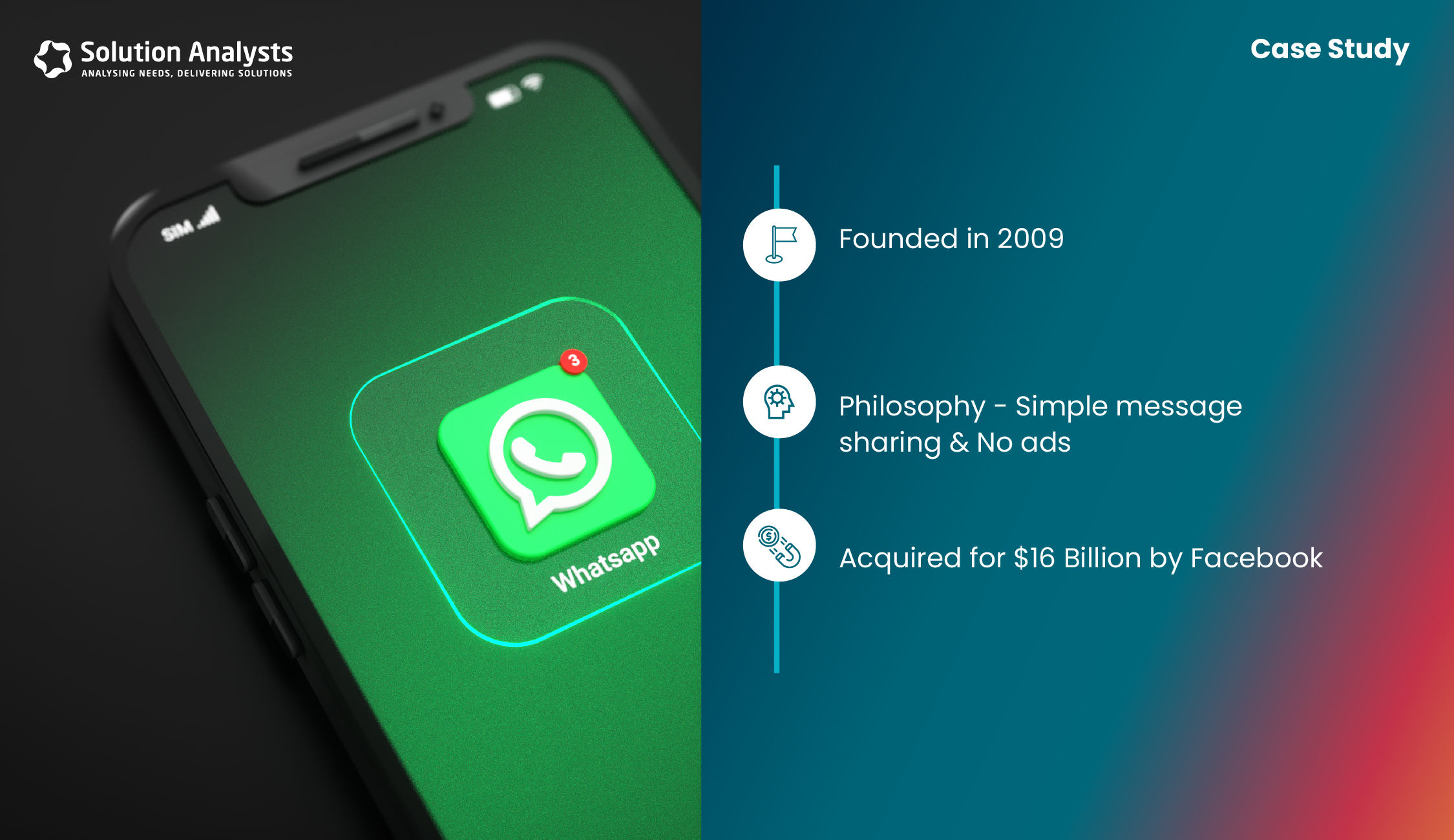
-
Whatsapp:
Brain Acton and Jan Koum created WhatsApp in 2009. What started as a small idea of a message-sharing application has become an empire today. The Philosophy behind WhatsApp was simple. Message sharing, no ads, and no gimmicks! When the founders launched the first version of WhatsApp based on iOS to their family and friends, they realized many errors and bugs. At one point, they nearly gave up the idea of it. After a few iterations and making some changes, when an updated version of WhatsApp was released, it spread like wildfire. Soon, everyone was using WhatsApp for chatting. In 2014, Mark Zuckerberg, the founder of Facebook, paid $16 billion for the application.
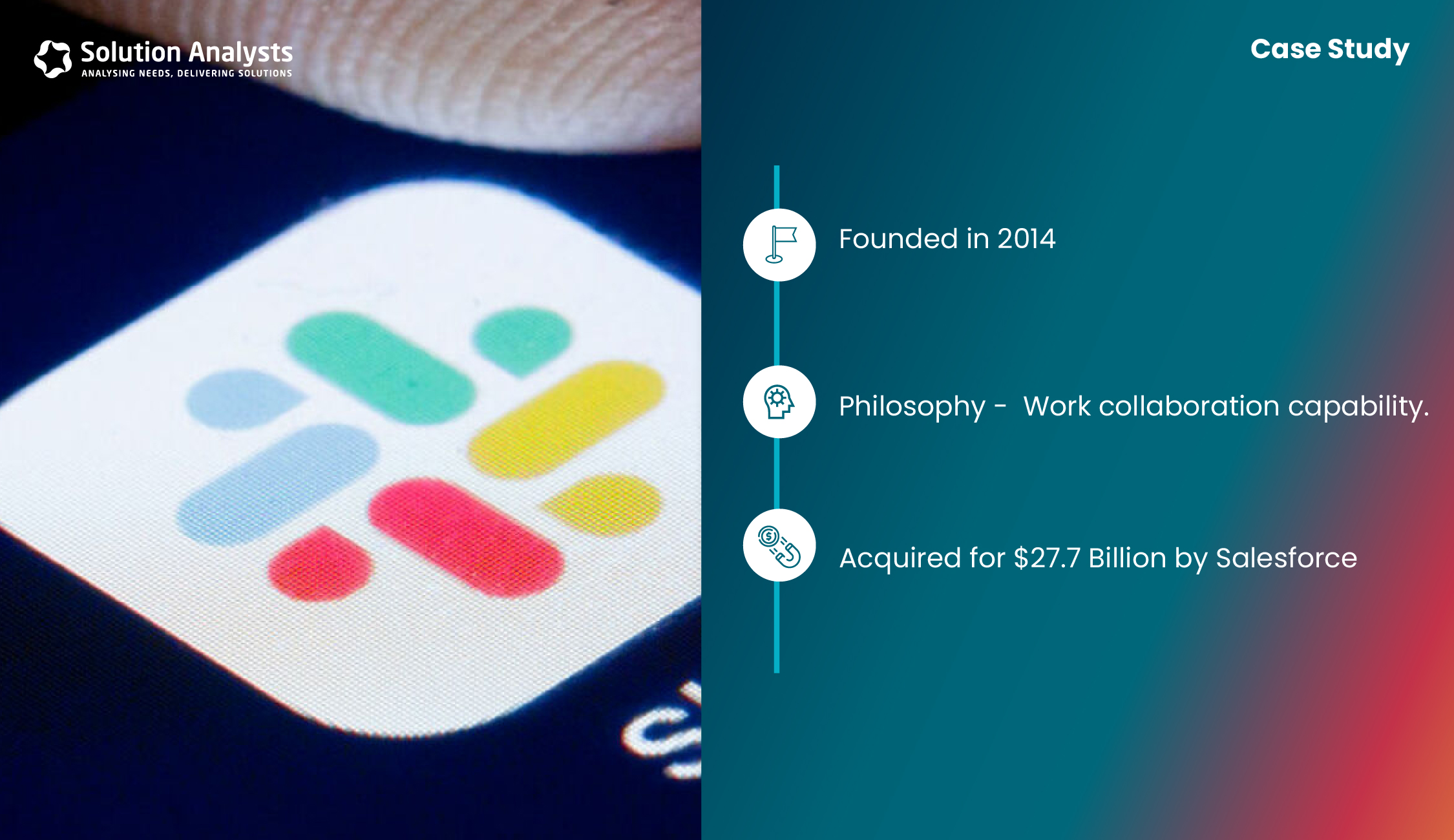
-
Slack:
Stewart Butterfield founded Slack after his game Glitch was facing a failure. He called his new tool Slack (Searchable Log of All Communication Knowledge). The application was released in the market in 2014. In January 2015, the company hit 500,000 daily active users. The voice call and video call was introduced in 2016. The application grew in popularity due to its work collaboration capability. Salesforce acquired Slack in July 2021 for $27.7 billion.
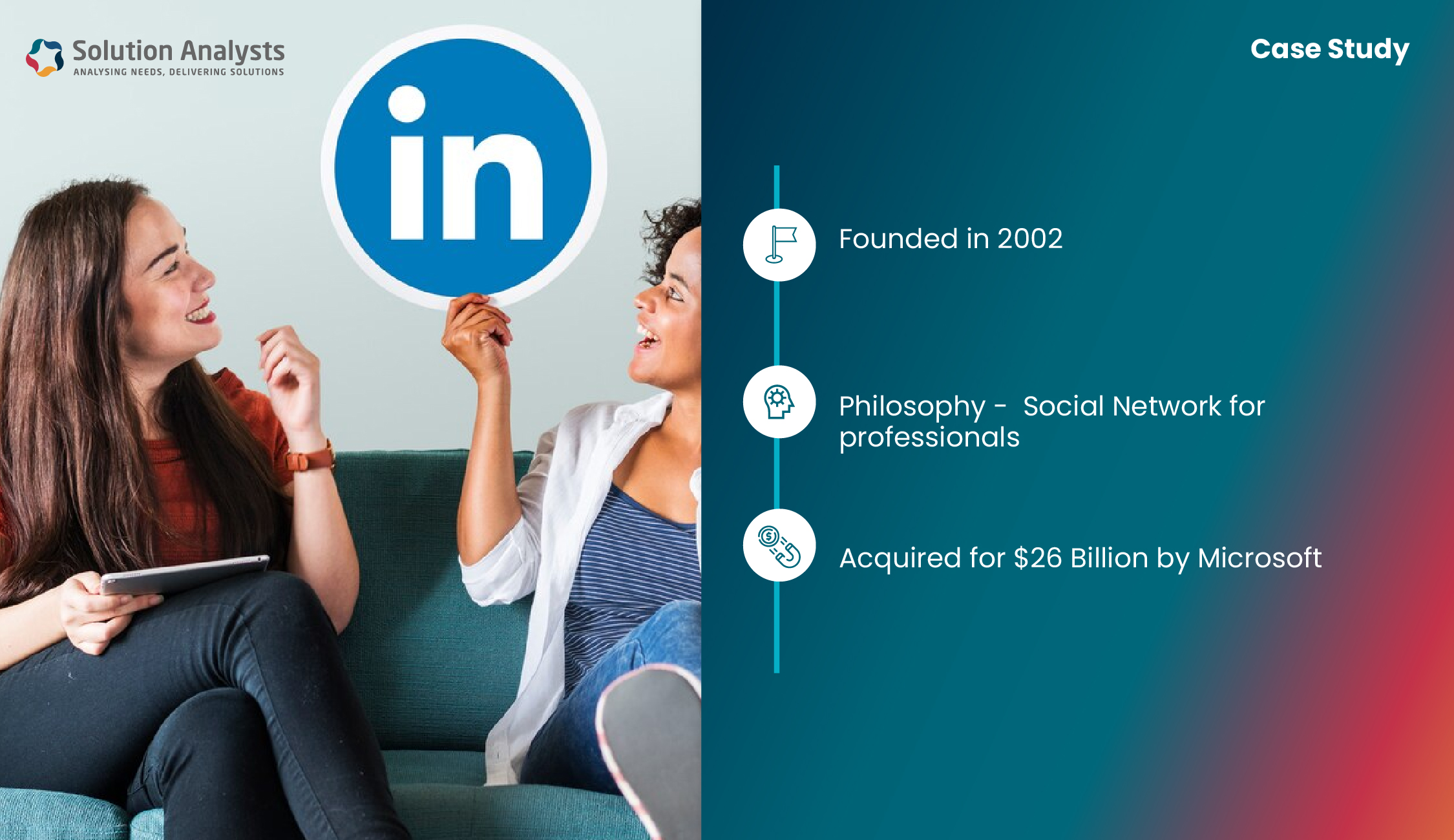
-
LinkedIn
Reid Hoffman launched LinkedIn in 2002. He partnered with fellows who worked with him on the last project and started developing a social network based on new fundamentals. By the time LinkedIn became popular slowly, new features were added. The company took over Lynda.com and rebranded it to LinkedIn Learning. In 2016, Microsoft acquired LinkedIn for $26 billion. At the time, it was Microsoft’s largest acquisition.
The noticeable pattern in these case studies is how entrepreneurs started from a tiny niche idea and built the application. They sold it to a giant corporation once it began gaining traction on a larger scale.






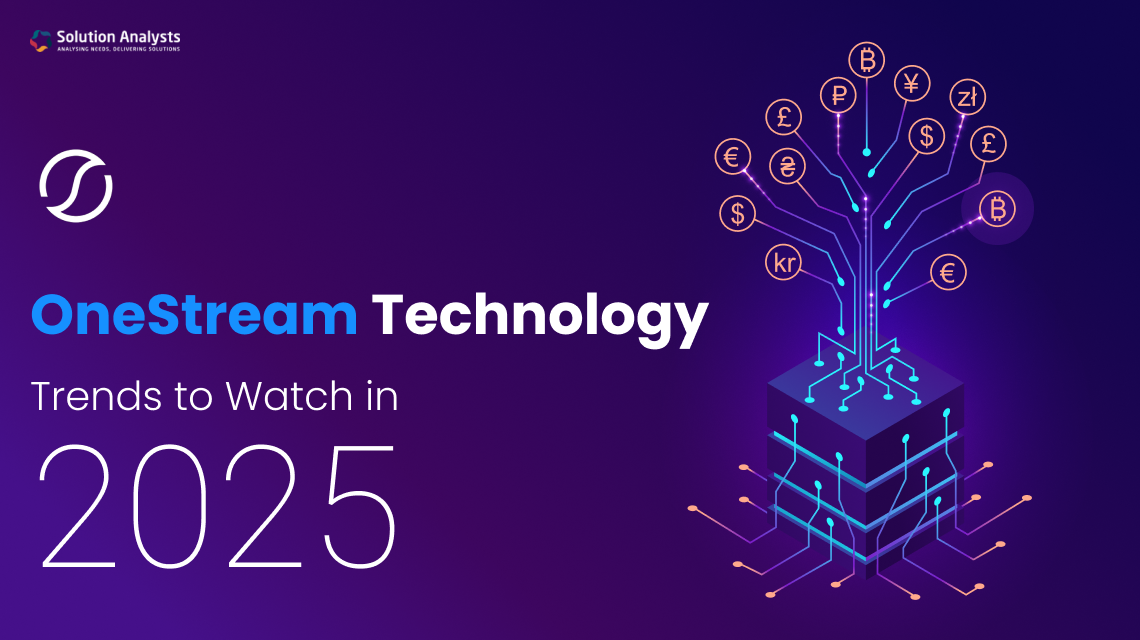


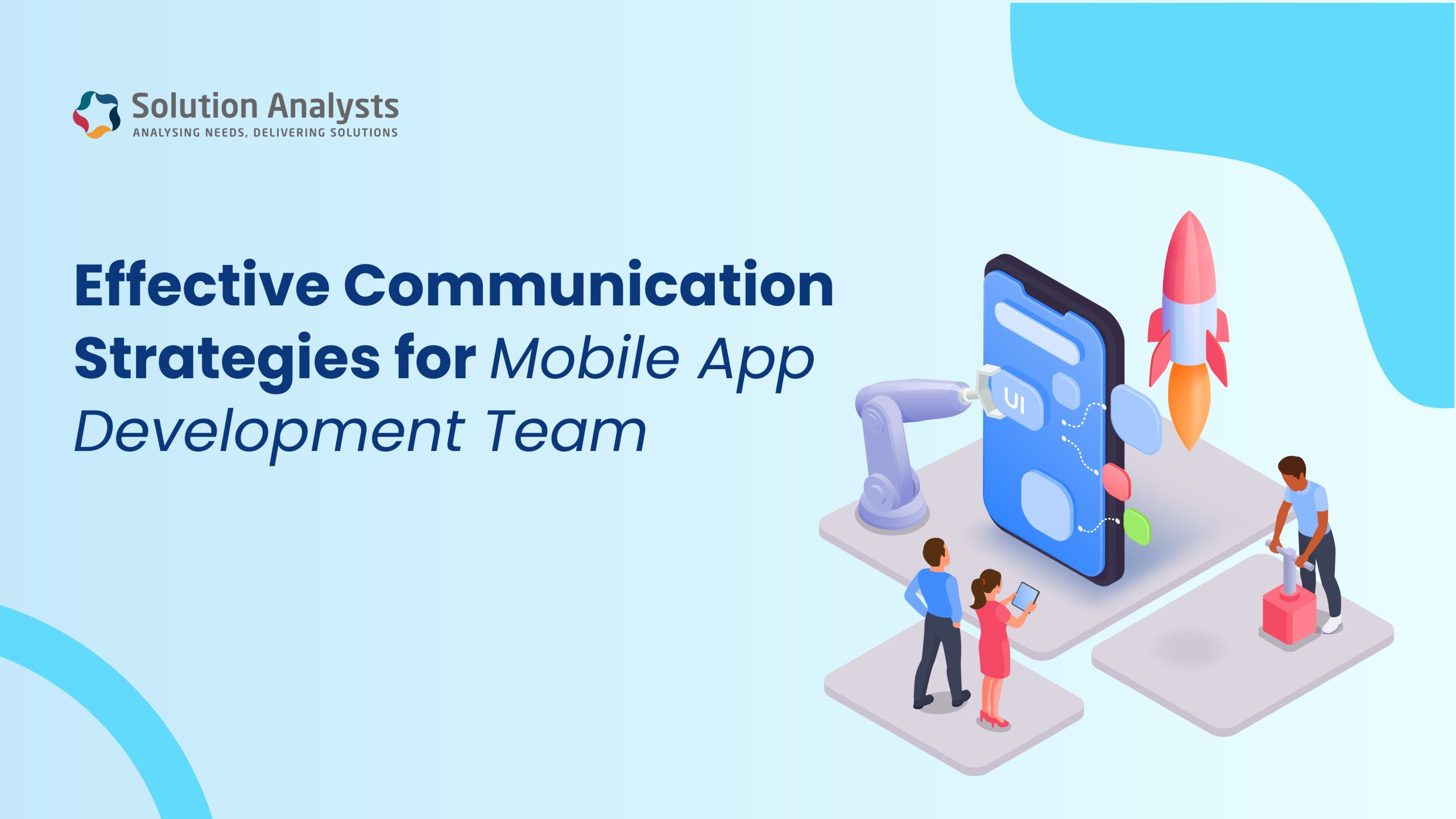
 sales@solutionanalysts.com
sales@solutionanalysts.com biz.solutionanalysts
biz.solutionanalysts






